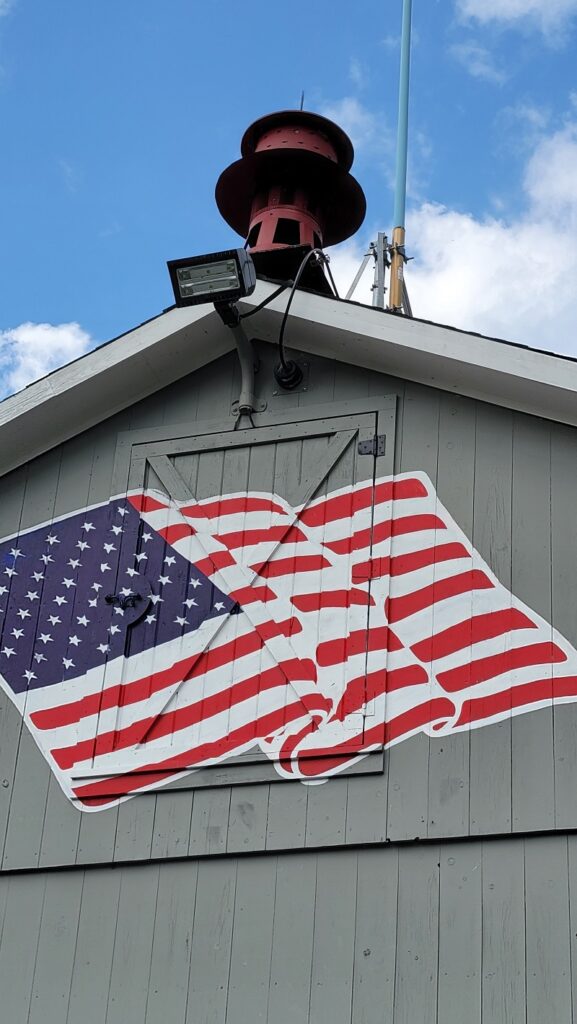No Longer a Bell, Norfolk’s Sirens Have a Unique History
Raising the Alarm
by Colleen Gundlach

Since 1907, the people of Norfolk have always had some manner of audible alarm to alert their volunteer firefighters to an emergency. In the beginning, it was a large bell, and someone needed to manually pull a rope to sound the alarm. Even though many changes have occurred over the years, that bell has endured, and today it sits on the lawn of the Norfolk Volunteer Fire Department (NVFD) on Shepard Road, a silent reminder of the passage of time and its accompanying changes.
It was in 1928 that the town purchased its first electrical siren, made by American LaFrance, which was placed in the bell tower at the Royal Arcanum building. It remained there until the bell tower was taken down in 1955.
According to Norfolk historian Richard Byrne, this version of the siren used an electric motor that caused a whistle to spin, creating the familiar siren sound. “This same siren was used nationwide as a civil defense notification system as well as a fire siren,” he says, “especially in the years when World War II was ramping up.” The sound was two tones – a high and a low. The current Norfolk siren cycles up and holds for 16 seconds, then goes down, with five cycles per minute.
The phone number originally assigned for reporting emergencies was 5521. Just 5521. In 1953, according to Byrne, the town installed a new telephone with the same number, but with a number two in front of it, 2-5521. This phone would ring not only in the fire house but in Dr. Frank Ursone’s office, Joe Pallone’s drug store and Ann’s Nursery for Babies. The staff at the nursery was on duty 24 hours a day, so they took the night-shift responsibility for answering the emergency fire phone. The audible fire alarm could be set off at any one of these locations to call out the firefighters.
In the 1970s, dialing that number would reach someone at the Falls Village power plant who would then initiate a phone tree, with the first person calling the next person on the list, and so on. The first person to arrive at the firehouse would write the location of the fire on a board so that firefighters arriving later would know where to go. This system became obsolete in 1989 when Litchfield County Dispatch and the 911 emergency system were instituted.
There was also a civil defense siren that was located on the Eldridge Gymnasium building (currently Town Hall). Byrne says the siren there would frequently ice over in the winter. He recalls that he often had to climb out a window on the back side of the building to de-ice the unit – a dangerous proposition on a slick roof.
Norfolk Fire Chief Matthew Ludwig stresses the continuing importance of the siren system. “With a large area to cover and many people out of town during the day, it’s important to be able to have a reliable way to alert the fire crew members who are in the area,” he says. “The siren does it when all else fails.”
In addition to its importance for notification purposes, having the siren as part of the NVFD protocol increases the department’s grade from the Insurance Services Office. This agency provides information to insurance companies about the property/casualty risk of fire departments. Factors such as quality of equipment, notification systems, response time and availability of hydrants affect the ratings, and consequently the costs, of insurance for each department. Norfolk is currently in class five out of nine. Ludwig explains that having a siren in use helps the town’s rating because “it improves our response time.”
And, of course, there is the iconic Norfolk noontime “whistle,” which has alerted people to their lunch break for generations. Not only a time-telling convenience for the townspeople (though it doesn’t always occur exactly at high noon), the noontime siren serves as a once-daily test of the overall system. “It helps to ensure that the siren is in operation and functional for when it is needed,” says Ludwig.
Jonathan Barbagallo, who serves as NVFD’s second assistant chief and public information officer, points out that this is the only time the siren is activated outside of a fire call. “It is only used for calls that are deemed to be emergencies,” he says, “not for pumping out a cellar or other nonemergency situation.” It also is part of the town’s civil defense program – “to alert for tornadoes or other emergency, though it has never had to be used for that.”
The siren also serves to remind townspeople of the service of the firefighters. Ludwig says, “I hope that the sound of the siren reminds people that people are stopping their lives so they can step up and help someone else. When that alarm goes off, people are getting out of their beds in the middle of the night to get dressed and go help someone else. They stop their day-to-day work and get on a fire truck. They roll out when help is needed no matter what the hour or circumstance. The sound of the siren should remind people of that.”
